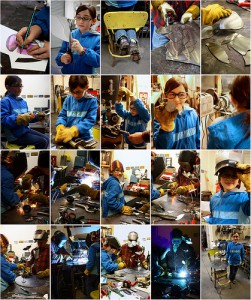Category: Education reform
Weekend Website #10: Google Mars
Drop by every weekend to discover what wonderful website my classes and parents loved this week. I think you’ll find they’ll be a favorite of yours as they are of mine.
Share this:
How to Web 2.0 Accessorize Your Classroom
Web 2.0 is the most exciting thing to happen to education since the schoolhouse. It is a limitless classroom, allowing students access to anything they can define. Includes what’s a digital citizen, how to create a blog, a classroom internet start page, a classroom wiki, how to join social networks and post pictures on Flikr, where to go for podcasting and online docs, and more.
Here’s where you start: (more…)
Share this:
Which Social Media Should Be Allowed in Schools?
Social networks dominated by Facebook now account for 22.7 percent of the hours spent in front of a computer, a leap of 43 percent over last year’s figures.
 According to the Neilson Co. report, the shift to social networks for communication caused a precipitous drop in email and instant messaging. Time spent emailing was down 28 percent and instant messaging dropped 15 percent.
According to the Neilson Co. report, the shift to social networks for communication caused a precipitous drop in email and instant messaging. Time spent emailing was down 28 percent and instant messaging dropped 15 percent.
If you don’t know what all the social networking stuff is, check out these two YouTube videos. They explain social networking in Plain English.
The question for schools is, how much of this should be let into the education environment. It’s way beyond the internet now. We’re talking about:
- YouTube
- internet access to email
These are all banned at my school. Yet, these are the sites that have kids excited about learning–excited about technology. So what are we doing? We’re cutting off the most effective avenue for keeping students interested in school because we’re afraid of them. (more…)
Share this:
You Have Permission to Disrupt Class
Disrupting Class: How Disruptive Innovation Will Change the Way the World Learns
My rating: 4 of 5 stars
Clayton Christensen offers a believable and intuitive approach to fixing our staggering American educational system. In a nutshell: people learn in different ways (no surprise here; it’s a well-documented theory). Teachers too often teach one way (or two or three–the point being, teachers standardize. I understand. I’ve been a teacher most of my life. One of us and many of them in a classroom). His solution: Use 21st century technology and Web 2.0 to individualize lessons to suit needs. (more…)
Share this:
Does Homeschooling Work? Yes
Homeschooled Children Continue Outperforming Their Public School Counterparts as
Homeschooling Increases in Popularity
In America, there was a time when the idea of homeschooling raised eyebrows of concern and could result in a visit from social services. A lack of trust by the government and public in general in a parent’s ability to educate their own children made homeschooling a bit of a stigma.
Even today in some circles, there are still many “old school” thinkers that go so far as to say that homeschooling is tantamount to deliberate child abuse. As ridiculous as that sounds to most of us, overcoming such ignorance has been a problem for some parents looking into homeschooling.
Overseas, it can be much worse. Homeschooling is illegal in Germany, a law instituted under Hitler and still enforced today. German families who choose to home school must do so in secret and run the risk of arrest; or worse, having the state take their children away.
Performance of home schools versus public and private schools
It doesn’t take much effort or investigation to discover that homeschoolers excel above their public school counter parts in nearly every category. According to a study conducted by Dr. Lawrence Rudner:
• The average home schooled 8th grade student performs four grade levels above the national average.
• One in four home school students are enrolled in a grade level that is above their age level.
• In every grade and in every subject, home schooled students outperform both public and private school students.
Other studies confirm these findings, showing that home schooled students have a much higher college entry rate, score higher on SAT’s and ACT’s, have a higher rate of college graduation, and earn higher incomes in the workforce.




































